Art in the Villa
Art forms such a special part of the Villa Canggu experience that we wanted to share some information on the background and inspiration of artists whose work adorns our walls and spaces. All the artwork that you see in Villa Canggu has been created by various contemporary Indonesian artists. We hope that learning a little more about these splendid pieces will enhance your viewing pleasure.

Eddy Susanto
“2012”
250x250cm
Acrylic and phosphor color on canvas
2011
An artist’s visual interpretation of the heritage of the Mayan people who scandalised the world with their prediction that armageddon would occur in 2012. The book known as Codek Dresden or Dresdensis Codex is a pre-Columbian Mayan book, written around the 11th century, that explores the idea of astronomy. The way they saw the relationship between the earth and other elements in the cosmos drove them to apply their knowledge of astronomy towards how they farmed, managed forests, even practised medicine. Eddy Susanto emphasises the symbols and codes found in this book to remind us of how important local knowledge is, being that which describes the importance of harmony between nature and man in maintaining the sustainability of life.
Eddy Susanto is a Yogyakarta-based artist. He was the first winner of the Bandung Contemporary Art Award in 2012 and his solo show, The Old Testament of Java, was held in Michael Jenssen Gallery, Singapore in 2014.

Edo Pillu
“Tuan Tambun”
150 cm x 200 cm
Acrylics on Canvas
2011
An artist’s view of how humans consume land on the earth. Edo Pilu sees that human beings, especially the ones who use money as a symbol of power, continue to use land to satisfy their desire to own. Edo depicts human behaviour as always chewing and devouring as if there’s no state of satiety. When humans use land to build and plant concrete on it, they don’t accept responsibility to nurture the earth, and hence this negligence causes various disasters.
Edo Pillu (Edward Pilliang) was born in Bandung in 1969 and studied at the Indonesian Institute of the Arts, Fine Art Department, Yogyakarta. He has numerous solo exhibitions in Indonesia and abroad to his credit, and was shortlisted as a finalist for many art awards such as the Phillip Morris Award, Sovereign Art Award, among others.

Yudi Sulistyo
“World Without Sea”
Paper, iron pipe, pvc pipe, wood, found object, paint
150 x 244 x 186 cm (small) edition 2/3
2013
Yudi Sulistyo mostly works with the idea of transferring everyday objects into very realistic sculptures using uncommon materials. He uses a lot of pasteboard to create objects which look heavy like furnace plants, planes, tanks and so on, with amazing detail and neatness. His works show his penchant for ideas about craftsmanship and the diligence of an artist.
This piece, titled World Without Sea, is his interpretation of the life of modern day people, torn apart by the struggle for land, especially in big cities. He imagines a situation when the earth can’t accommodate humans any longer, therefore he creates a temporary room in space in which humans can live.
Yudi Sulitiyo is a full-time artist, who is at heart a practitioner of creative industry, born in Yogyakarta on 20 October 1972. He studied Graphic Design at Institut Seni Indonesia Yogyakarta (Indonesia Institute of the Art Yogyakarta). In 2007, he received the Kosasih Award and in 2003 was a finalist at the Indofood Art Awards. He has participated in group exhibitions in Australia, Indonesia, Korea, and Singapore.

Zico Albaiquni
“Opera Aperta Rite of the Cult”
Mixed media on canvas
120 X 200 cm
2011
In this work, Zico depicts the relationship between modern man and religion. As an institutionalised spiritual rite, religion drives humans to reproduce rituals which they often do as a meaningless routine. Zico depicts human figures with the symbol of an Islamic worshipping mat to show how things used in rituals have also become consumed symbols, without deeper meaning. Generally, Zico sees the significance of various rituals done by man as a stage, and what happens on it as acts in an opera. This also shows how man loves the hustle and bustle, being in a crowd and often losing their own identity.
Zico Albaiquni was born in 1987. Apart from being a visual artist, he also works as an assistant lecturer at the Faculty Of Art and Design, Bandung Institute of Technology, where he previously studied. He is the founder of Galeri Gerilya. He actively exhibits in many group shows in Indonesia.
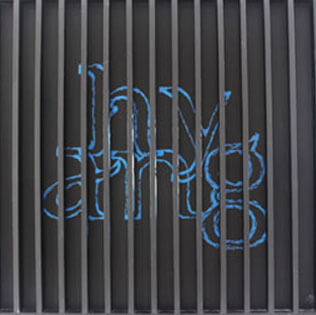
Patriot Mukmin
“The Presence Of Mind”
93 X 94 cm
Oil, Acrylic On Canvas. Mounted On Boards
2012
This painting takes trance as its theme, a condition which lies between the realms of consciousness and subconsciousness. In Indonesian culture, trance is a condition closely related to a spiritual experience, entering a world in which humans can escape their bodies and meet other forces. Trance is also found in traditional performance arts like jathilan, angguk, reog and many more.
In the past, this ritual became a medium for humans to meet other forces that they believed in. Thus, there is a belief that in the state of trance, one can meet spirits from another world. Trance experience is closely related to the ability of humans to delve into a state of contemplation and belief in the idea of resignation.
Patriot Mukmin was born in 1987. He graduated from the Fine Arts Department, Faculty of Art and Design, Bandung Institute of Technology, where he also pursued his masters degree. He had one solo show in 2013 in Galeri Gerilya in Bandung. In 2011, he won the first prize at Bazaar Art Award.
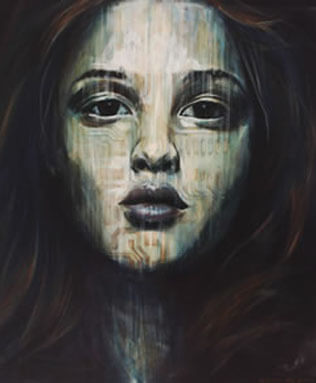
Nanang Kelik
“Cyber Girl”
Acrylics On Canvas
100 X 120 Cm
2010
Nanang Kelik is interested in exploring interpersonal relationships which are nowadays heavily affected by the utilisation of technology. Human communication has come to rely on mediums, and not on face-to-face interaction. This also alters their perception of their own identity. Communication technology enables humans to reproduce themselves into various characters and identities, since the body no longer represents the presence of a human.
Nanang depicts such a condition by painting the faces of seemingly expressionless humans, referring to a situation in which humans can change their expressions and feelings based on various virtual realities that they experience during that moment. In recent times, technology can even create and control our feelings.
Nanang was born in Bengkulu, 1980. He studied at the Faculty of Fine Arts, Indonesian Institute of the Arts, Yogyakarta. His work has been featured at many group exhibitions throughout Indonesia. In 2014, he held a solo exhibition at the Art Front Gallery in Singapore.
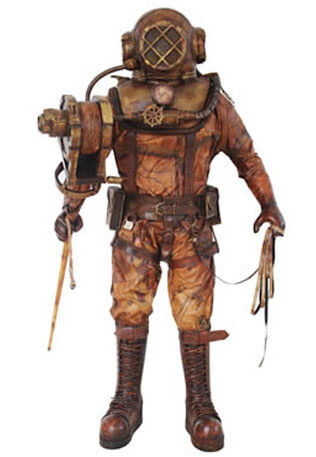
I Made Lampung
“Melihat Lebih Dalam”
Silicone, Metal, tin, gauze, leather, leather paint, wood
120 x 50 x 30 cm
2013
This work is inspired by Lampung’s will to picture the beauty of the Indonesian maritime landscape, which is often named as one of the most beautiful in the world. For a long time, these maritime sites have been seen as commodities for the tourism industry. The growth of the tourism industry based on ocean activities has destroyed the landscape and created pollution since there is no policy to protect the ocean resources.
This work captures a diver, an adventurer who wants to discover the beauty of Indonesian oceans. But instead of finding the magic, he ends up being disappointed by the dirty underwater world.
I Made Lampung was born in 1981 in South Sumatra. He graduated from the Indonesian Art Institute (ISI), Yogyakarta in 2007. He had a solo exhibition in 2010 called White Lotus at Mon Décor Gallery, Jakarta. He was awarded the Best Young Artist at the Academic Art Awards by the Indonesian Art Institute (ISI), Yogyakarta, Indonesia, and he received the Best Sculpture Award at the Dies Natalis Indonesian Art Institute (ISI), Yogyakarta in 2007. In 2010 he received accolades as one of 25 Best Art Works at Bandung Contemporary Art Awards (BaCAA).
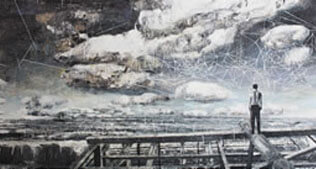
S. Dwi Stya ‘Acong’
"Suluk Pesisiran”
Oil on canvas
160 x 300 cm
2013
The term for coastal in Bahasa Indonesia (pesisir) doesn’t only refer to the geographical concept of a coastal area, but it also refers to the concept of a unique cultural zone. Maritime culture in Indonesia is close to concepts of trade, industry, working class culture and a lifestyle which opens itself to foreign cultures (since it is located close to the beach, the interaction with foreigners is more intense). This is what makes it different from hinterland cultures which are close to agricultural, spiritual and high culture (since its location is close to a kingdom). Coastal Mysticism is a culture of singing in which a human tries to meet his Maker. Usually it is a part of an art performance ritual like a dance or shadow puppet play.
In this work, Acong depicts a life which is full of coastal culture, and he uses the figure of a young man to describe a coastal resident. This figure gazes at a distant horizon, a line where sea meets the sky, a scenario where he imagines a meeting between humans and God can occur.
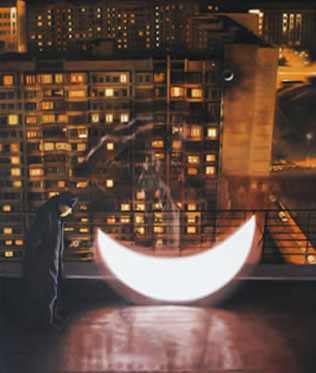
Guntur Timur
“Brown Moon”
120 cm x 160 cm
Oil Canvas
2011
Guntur Timur’s work deals with layers of reality in our contemporary urban society. He depicts many different aspects of city life and blends them into canvases, from the architectural landscape, human figures, views from nature, even the surrealistic and imaginative capture of human’s dreams. Guntur Timur’s works guide audiences to the sense of silence, which is in contrast to the reality of our urban space. His paintings are a mix of realism and photographic capture, with strong brush strokes that give his individual touch to particular city phenomena.
Guntur Timur was born in Bandung in 1980. He graduated from the Fine Arts Department of Bandung Institute of Technology. His solo show was held at VM Art Gallery, Dhoraji Society, Karachi, Pakistan.
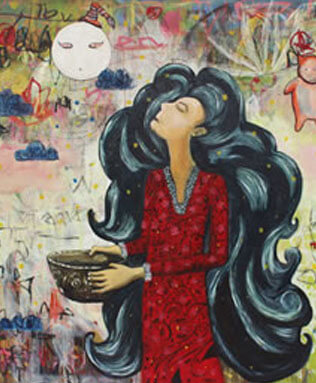
Ronald Apriyan
“Missing Mom”
140 cm x 160 cm
Mixed Media on Canvas
2011
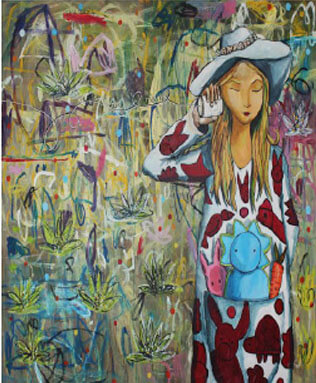
Ronald Apriyan
“Moms Calling”
140 cm x 160 cm
Acrylics on Canvas
2011
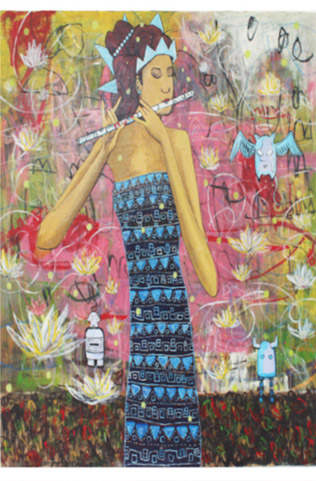
Ronald Apriyan
“Mother and Flute of Peace”
140 cm x 140 cm
Acrylics on Canvas
2011
This series of three paintings by Ronald Apriyan is inspired by his mother. He made these works after his mother passed away, to immortalize the memories of his mother through something other than a portrait.
Ronald saw how his relationship with his mother had shaped his view of this world, especially how men and women should respect each other. Ronald depicts three different figures in each of his paintings to state how modern day women can choose to be whatever they want to be, with diverse identities. Women have the right to be independent and to be themselves, as Apriyan’s mother had taught him.
Ronald Apriyan is a young artist who simultaneously uses performance, printmaking and painting as his medium. He studied at the Faculty of Fine Arts at Institut Seni Indonesia.
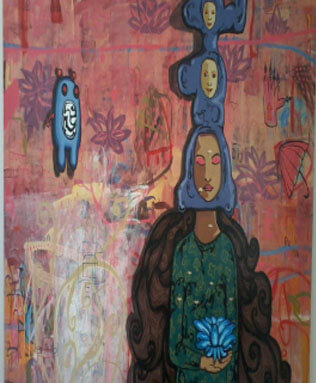
Ronald Apriyan
“When my wife is praying”
140 cm x 160 cm
Acrylics on Canvas
2011
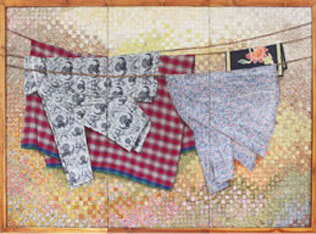
Fatchurohman
“Tanpa Tanda Jasa”
133x 180 cm
Kolase Tenun, Kin Lurik dan Batik Lawas
2012
In a communal society like Indonesia, the existence of an individual can not be separated from their connection to organisations or associations. The strongest display of this relation is the use of uniform. The artist is interested in exploring the uniform of civil servants in Indonesia, and present the dream of Indonesian people to become civil servants. Although many people want to be civil servants since it is an easy job to do, they also have to face the reality that civil servants do not get high salaries. One of the most important groups of civil servants is teachers. The artist himself came from parents who work as teachers, with very low appreciation, therefore he confirms the social opinion saying that a teacher is a hero without medals. Faturachman collected fabrics from old clothes he bought from flea markets and made collages into this particular drawing.
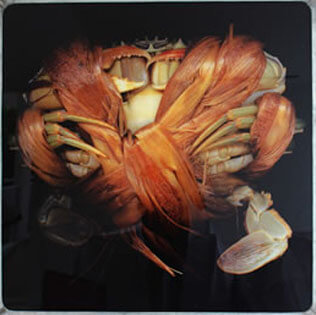
Angki Purbandono
Kepiting Betin
Scanograpy UV Print on Acrylic
100 cm X 100 cm
2010
Angki Purbandono started his career as a photographer studying visual arts. As a result, a mixture of fine arts and photography make his approach unique. By 2005, he realised that digital technology had changed people’s idea about photography, particularly as a representation of reality. Since everybody can now take pictures and have their own device, Angki decided not to use cameras anymore to produce visual images. He started to develop his approach on scanography, and make his photographs using this machine. He is interested in everyday life objects, combining daily tools and equipment with toys and products of popular cultures. The result is striking - interesting imagery of many different visual symbols.
Kepiting Betina (Female crab) comes from his observation of the way people treat animals and how they appear in the market. The sellers put belts on the crabs, making it a form of craftsmanship, but as consumers, most of us do not really appreciate or even never think of the condition of the crab which we consume.
Angki Purbandono (born in Indonesia, 1970), studied at the Faculty of Media Record, Indonesian Institute of the Arts. He has been exhibiting his works internationally in many international biennales, museums, and galleries in many cities in the world.
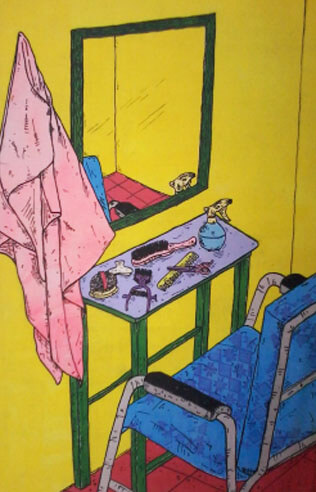
Elwin Pradipta
Potray Jelengkong
Video Projection on White Frame
2012
The artist captures the phenomenon of an art village in West Java which is known for producing mooi indie paintings. Everyone in the village can make paintings to sell at art bazaars or to hang at people’s houses. For him, it is interesting the contradictory situation where this kind of painting is not being considered as something really important in the history of modern art in Indonesia, but at the same time, these paintings are the most familiar style to common people. It can be said that this is the idea or the notion of art understood by the people. In the history of Indonesian art, a mooi indie painting positioned itself in the role where an artist made artworks to fulfill the taste of colonialism, to create a sense of beauty of the country’s landscape. The artist wants to show a situation where many people in Indonesia, let’s say many artists, are still in this gaze of colonisation, want to portray the ideal concept of beautiful nature.
Elwin Pradipta was born 1990. He studied at the Faculty of Art and Design, Bandung Institute of Technology. He has been joining many group exhibitions in Indonesia. His last one was Southeast Asia Triennale at National Gallery, Jakarta.
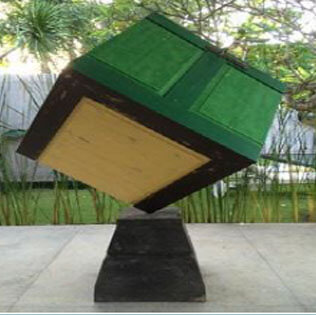
Anusapati
Kotak Pandora
110 x 110 x 160 cm
Wood
2013
This work is inspired by the form of Pandora’s box, which we usually keep as a sacred space to place important things, therefore the door is always closed and is waiting to be opened in the future. For the artist, the metaphor of Pandora’s box fits the situation in Indonesian society where people tend to keep what they inherited from the previous generation as if they are something inside the box. Within the heritage, there are contradictions of what is bad and what is good. This encourages people to be critical towards those different values, and to adopt and adjust so they can be relevant to the current situations. To put them in Pandora’s box means to avoid criticality, and in the end, will lead us to be a puritan and narrow minded society.
Anusapati’s works deal with ideas of what is natural and what is man-made in the discourse of contemporary sculpture in visual arts. It is interesting to see how he creates ideas of art objects using everyday visuality and forms, and most of the time he chooses natural materials such as wood, bamboo or stones. His forms are simple but contain a very deep concept and wisdom, confronting us with our established perception about objects.
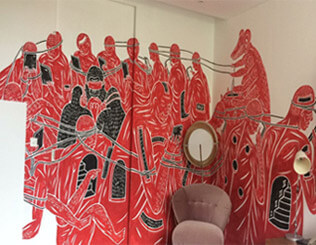
Farid Stevy Asta
First mural in the bedroom
Farid made two narratives of the murals. First, the mural in the room, he created a story about comparison between our lifestyle today and the way we lived in the past. For Farid, the generation of the past had lived a life full of wisdom and peace. Nowadays, people are too proud to be modernised and live an instant lifestyle, or glamorous life. In this series, he draws a goat who becomes a leader for human beings, bringing their gadgets. Each of them are too busy with their gadgets, and there are also monkeys who are sitting next to each other facing the light bulb, trying to find light and warmth. Farid wants the guests who stay in the room to have the feeling of longing for the way of life in the past. He invites the guests to temporarily leave our modern concepts behind, bringing the nostalgia of intimacy and warm feelings instead of being busy with contemporary technology.
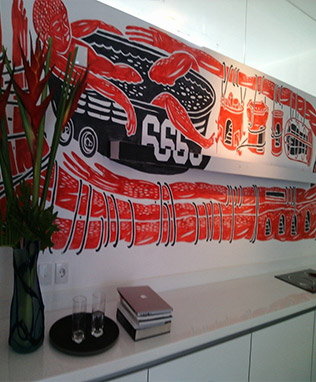
Farid Stevy Asta
Second mural in the kitchen
In the second series, on the wall of the kitchen, Farid portrays his memory of his loving grandmother. His grandmother was very special to him since he was taught by her in his early years. Nowadays, he has been trying to create a better and fuller archival memory about the story of his grandfather and grandmother, who happened to be victims of the black tragedy in Indonesian society around 1965.
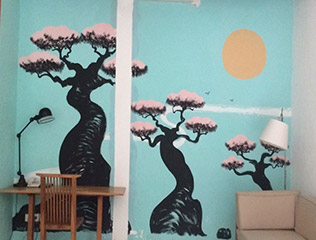
Aprilia Apsari
The Moon & Pink Bonsai Trees
Aprilia Apsari draws the memory of fairy tales usually told to young girls about princes dancing under the moon, walking around under the bright sky with friends, singing a happy song. This mural is an obituary of this childhood memory, of her togetherness with friends, and also the social situation which enabled them to play around in open space. These days, kids and young people are not used to being close with nature, not having an idea of how fun it is to dance under trees, under the moon. She portrays this very melancholic situation by coloring the bonsai tree in a pink colour, something not common to find, to underline the idea of an illusion.
.jpg)
Prihatmoko (Moki)
Moki’s drawings most of the time show more abstract visual imagery than proposing a clear narrative idea. Especially for murals made for the bedrooms, it is important for Moki to create a calm and inspiring ambiance, to give a relaxing feeling. This ambiance was mostly supported by his choice of pastel colours that give the mural a combination of childhood memories and feminine touches. Moki encourages the audience/guests to arrange their own narrative or fantasy of those abstract images, and hopefully this imagination and fantasy can lead them to sweet dreams.

Yogie A Ginanjar
“A Girl and The Swan”
Oil On Canvas
100 X 80 cm
2012
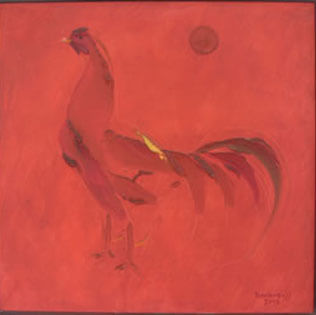
Iswanto JJ
"Red Roaster"
83 x 83 cm
Oil on Canvas
2007

I Made Duatmika
“Bunga Kamboja” Frangipani
Acrylics On Canvas
200 X 150 cm
2009

Agung Surya Wijaya
“Penari Api" Fire Dancer
Iron, Ezer Plate
80 X 105 X 190 cm
2009
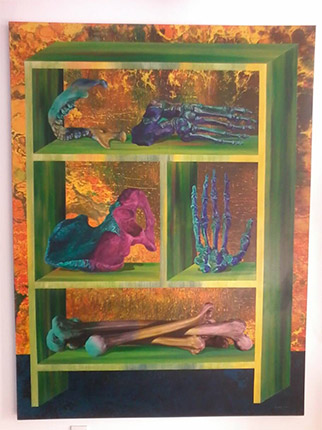
Wedhar Riyadi
Bone Shelf
Oil On Canvas
200 X 150 Cm
Unique
2014
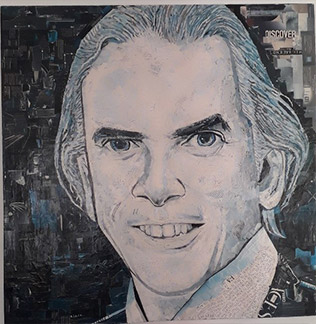
Eddy Coethyl
“Bernard"
Collage Of Magazine Prints
150 X 150 cm
2014
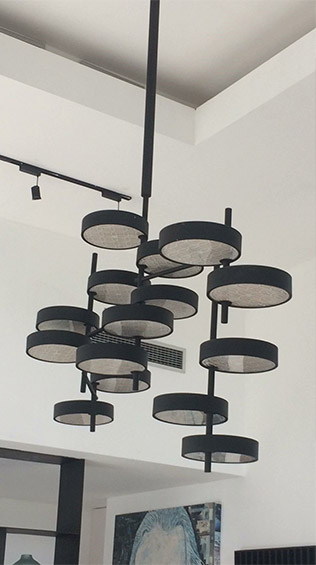
Budiman Ong
“Kawung Mobile Chandelier”
Iron
78 X 218 X 120 cm
2014



